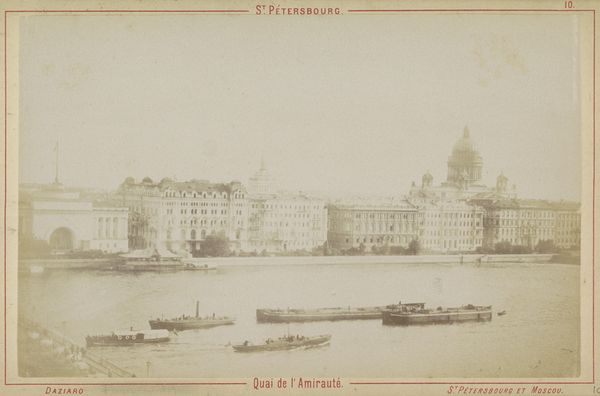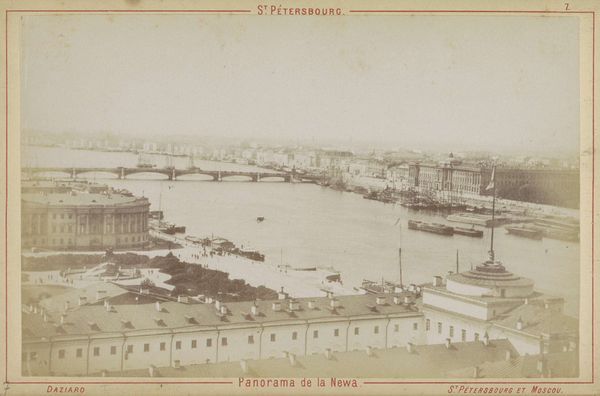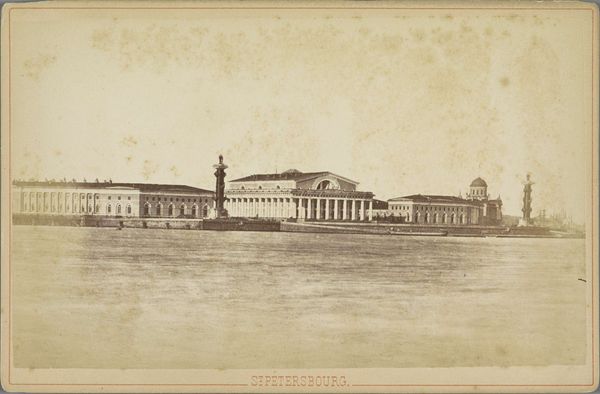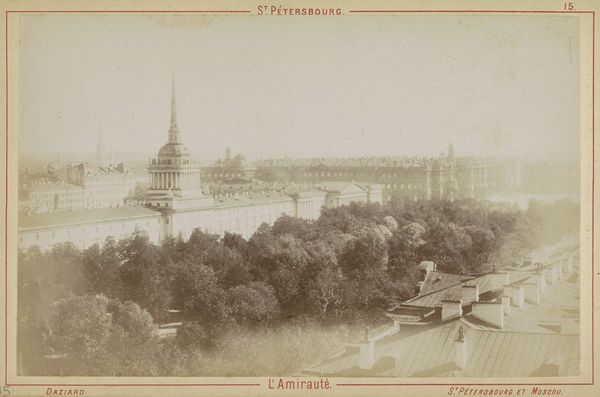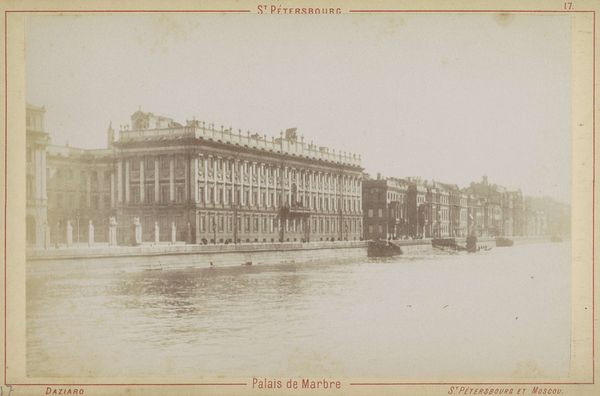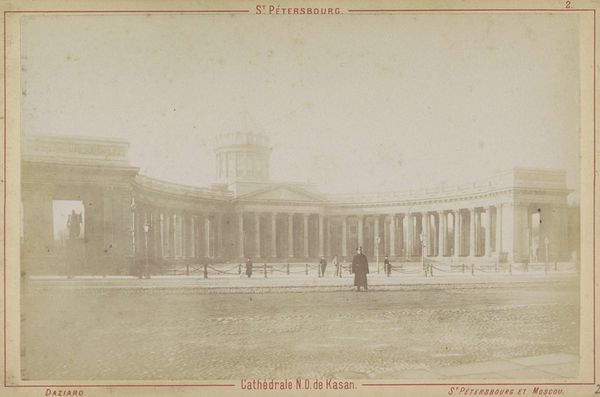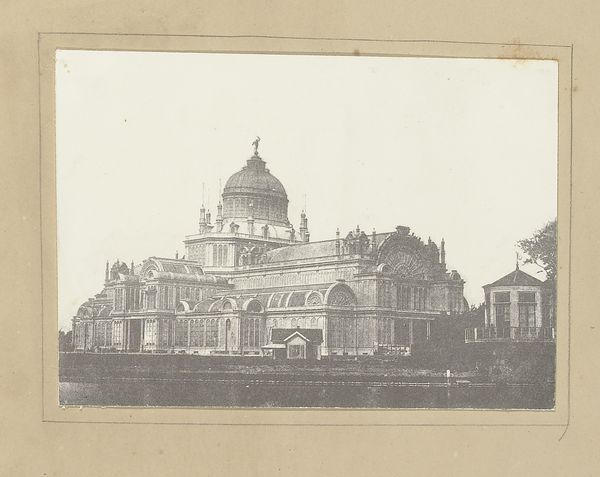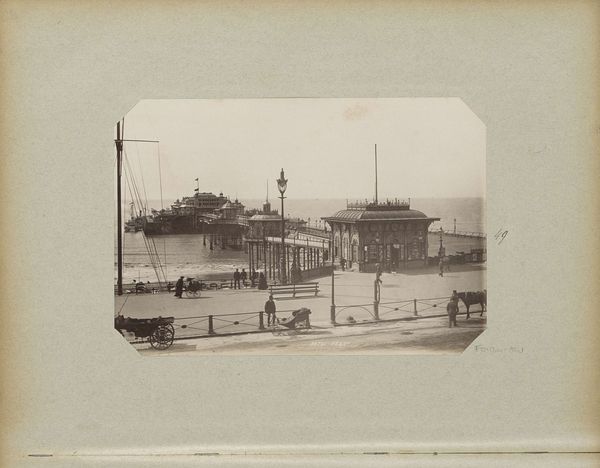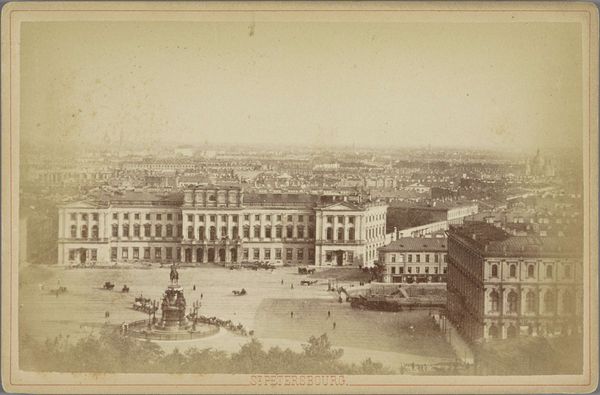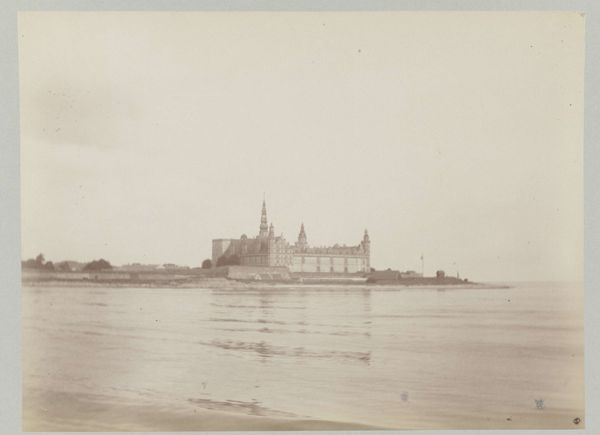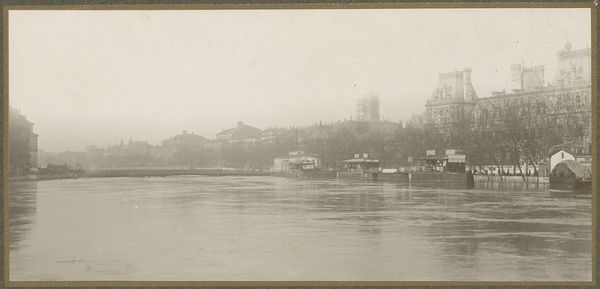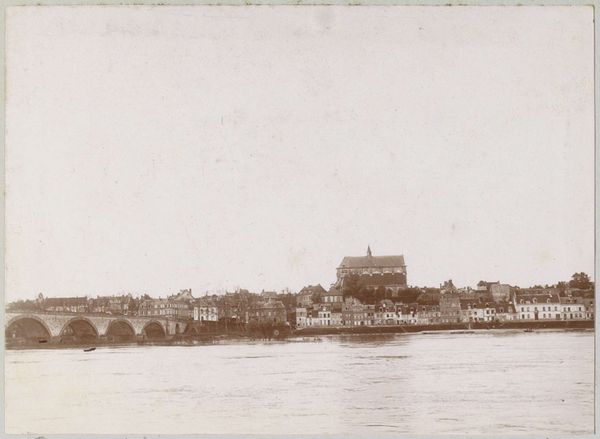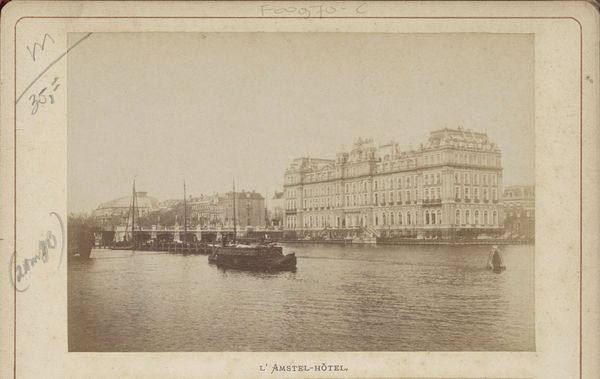
Gezicht op het beursgebouw van Sint-Petersburg met op de voorgrond de Neva c. 1880 - 1900
0:00
0:00
Dimensions: height 95 mm, width 145 mm
Copyright: Rijks Museum: Open Domain
Editor: This albumen print, dating from around 1880 to 1900, shows the Stock Exchange in St. Petersburg by J. Daziaro. It’s quite muted in tone, giving it an almost dreamlike quality. What do you see in this piece, especially concerning its formal aspects? Curator: The subdued tonality you noted is critical. The limited chromatic range pushes us to analyze the tonal variations and how they structure the image. Observe how the composition relies heavily on horizontal lines – the river, the building's base, the horizon line. This creates a sense of stability, almost static, which contrasts with the implied movement of the water. Editor: So, the composition reinforces a certain stillness despite the subject being a cityscape on a river? Curator: Precisely. Furthermore, consider the albumen print process. It gives a unique texture and warmth compared to modern prints. Notice how the texture interacts with light and shadow, softening the details and adding to the overall atmosphere. Is there anything striking about the structures represented? Editor: The pillars! There are so many pillars aligned in the front. Also, it makes me wonder about the position of the photographer. Curator: Yes, the play of repetition of the pillars! The repetition of the columns creates a rhythm, a visual echo that defines the architectural space. And by manipulating the angle the photograph flattens out the depth, accentuating the foreground-background dynamic and presenting depth. Editor: That's fascinating. I hadn't considered how the printing process and composition choices amplify the mood. Curator: The key here is understanding how those formal elements intertwine and inform one another to shape meaning, or even disrupt it, offering us new perspectives into photography from the period.
Comments
No comments
Be the first to comment and join the conversation on the ultimate creative platform.
